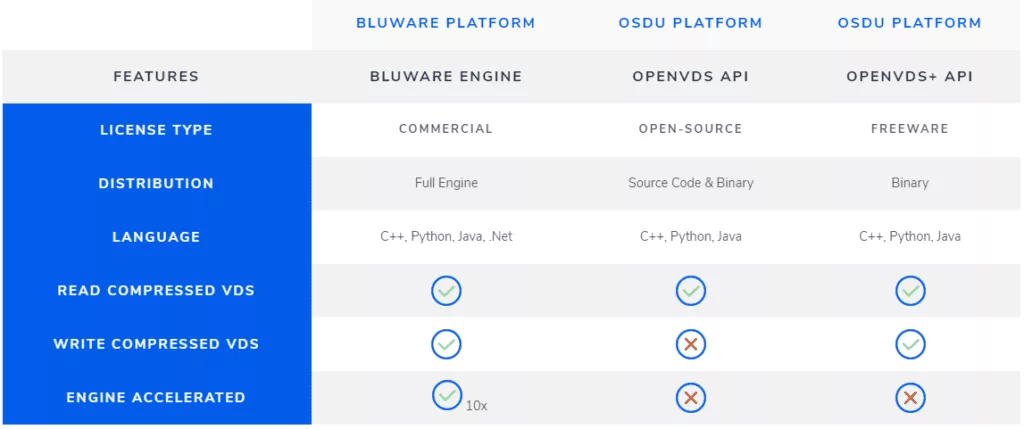The Bluware Engine is the VDS tech-stack/ecosystem which includes all mentioned products below:
Volume Data Store (VDS™) – is a powerful and flexible storage format for multi-dimensional signal data. It compresses raw and interpreted seismic data sets, making them adaptable and scalable, giving your organization the advantages of fast data access, cost-effective cloud storage, and compute-intensive workflows. It includes both local file and cloud object storage (“sharded”) variants.
OpenVDS – is the opensource API to create and read VDS files, but with limited functionality.
OpenVDS+ – is OpenVDS with the addition of freeware tools. It adds the ability to write compressed VDS files.
Regardless of which VDS APIs are chosen, your data can all be freely converted back to its original format.

For a technical deep dive into VDS and it’s capabilities, click here.
HueSpace™ – is the commercial VDS API with full functionality and speed.
HueNode™ – is an OpenGL-based graphics rendering pipeline for VDS.
FAST™ – Bluware Flexible Access Storage Transcoding (FAST™) streams seismic data from VDS cloud-native data format into the format required for your existing interpretation applications (ZGY, Vt, SEGY, PaleoScan, etc.). Using adaptive streaming technology, the application reads seismic data in real-time without duplicating the data, so it is available instantly.
InteractivAI™ – is an interactive deep learning (artificial intelligence) interpretation software powered by VDS and TensorFlow that gives geoscientists the ability to interpret seismic as the tool provides real-time feedback, suggesting an interpretation on unseen data.
ScaleOut™ – is a cloud-native platform that allows users to run algorithms chained into workflows using cloud facilities (i.e. distributed compute). ScaleOut can also be run locally or in HPC. In essence, it distributes work to HueSpace running on individual nodes.
